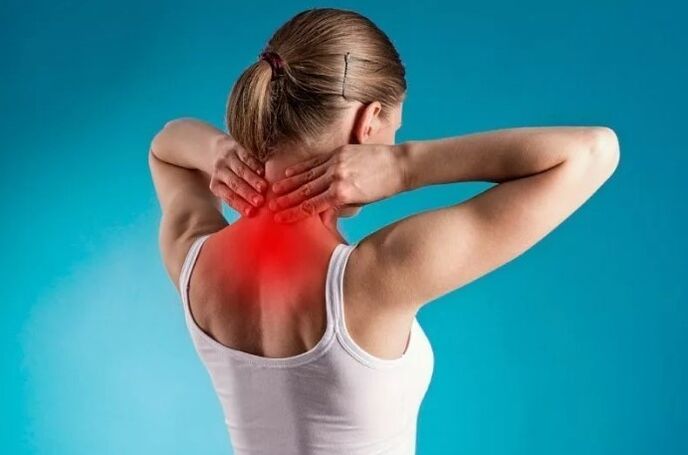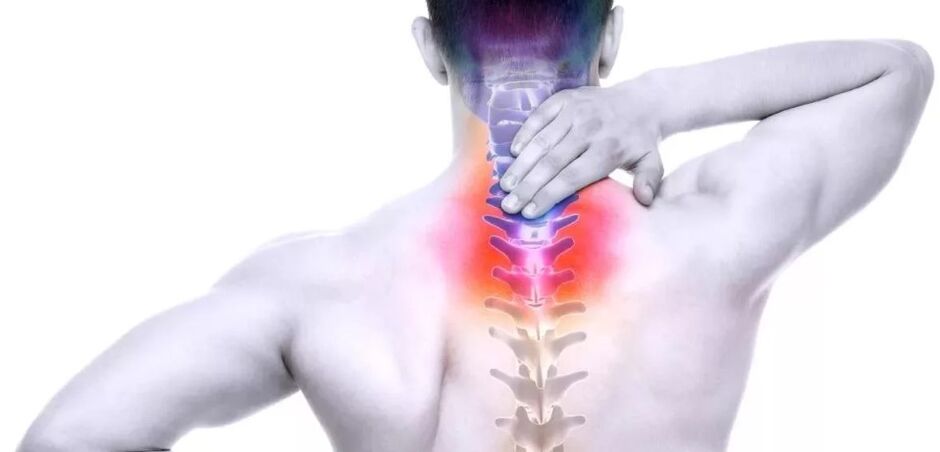Cervical osteochondrosis is a progressive dystrophic and deigorative lesion of intervertebral discs in 1-7 Vertebra region belonging to the cervical region.
Cervical osteocondrosis, deformation, depletion and then damage the vertebral objects. This violates normal blood supply and annoying conductivity and nervous conductivity.
Cervical osteochondrosis can be either isolated, or combined with osteocondrosis of other departments - Lumber and Sacral.

The reasons for dystrophic and degenerative changes in intervertebral disks are not yet learned enough. The assumption of osteocondrosis is a validation phenomenon. It is also found in children and adolescents.
A number of factors inclined to the development of osteocondrosis are different. These include:
- Sedomer and sedentary lifestyle,
- Types of work sitting in a static load on the neck,
- Overweight, insufficient physical development,
- Dustrational processes of connective tissue,
- Breach of blood circulation in the neck,
- neck injuries,
- Scoliosis, posture defects, restless bags and mattresses,
- Hereditary tendency, metabolic defects.
Cervical waist, skeleton features, as well as the great size of the head, is especially sensitive to osteocondrosis - is the smallest compared to other parts of the spine and the muscle frame is not very pronounced.
The most characteristic symptom that patients complained - pain in the cervical region. Pain can be localized depending on the damage zone
- collar and on the shoulder;
- along the cervical spine;
- On the front surface of the chest.
Pain for cervical osteochondrosis is related to the features of the cervical region.
The first signs of cervical osteocondrosis are insignificant and somewhat specific:
- Pain in the evening in the evening,
- The feeling of gravity at the beginning, headache in the occipital zone,
- a sense of numbness or tingling in the shoulders and hands,
- Criston, which is in the neck, clicking on the neck while turning his head.

Leading symptoms:
Vegetative-dystonic
- It is quite severe pain in the neck, and especially in the area, only the back of the head;
- The pain occurs after a long period of time in one position (eg after sleep);
- Neck muscles are constantly tense;
- There are difficulties in staying out of hand;
- Fingers on the affected side are restricted in movements.
Since vertebral arteries are compressed, neurological manifestations are observed: headache, nausea, faint.
Spinal symptom
Pain is localized behind the sternum on the left.
This type of pain should be different from pain as in the angina pector (with nitroglycerin, ostreocondrosis), as it is in the pector.
With the gradual violation of the structure of intervertebral disks, their compression (compression) violates or violate or violate violations, as well as vessels and vessels.
This causes special syndromes - the formation of radicular and ischemicals.
- The defeat of the first cervical vertebra (C1): violations affect the back of the head by reducing skin sensitivity;
- Lesion C2 gives pain behind the crown and the head behind the head;
- C3's lesion, pain in the way of violation, reducing sensitivity in language and reducing sub-line muscles, in some cases speech disorder and language control loss;
- C4 and C5 defeats give pain in the tone of the shoulder and clavicle, the muscles of the head and neck, hiccups, respiratory disorders and pains in the heart;
- The defeat C6 is mostly on the neck of the neck, from the front shrubs, the front of the front, skin sensitivity may suffer:
- The defeated C7 gives you similar symptoms with the back of the neck, behind the shoulder, the power of the hand, and reduced the power of the hand.
Due to the creation of blood vessels in the cervical vertebra region, the violation of the blood circulation is migraine, fierce dizziness, visual impairment and ears fly to the disorders of the autonomous functions.

Compressive heartache, air and heartbeat, can be the manifestations of heart syndrome with rhythm disorders.
Cervical osteochondrosis has serious complications
- intervertebral disks protrusions with a hernia (protrusion) formation;
- The tearing of the intervertible disk with violations of nerves and blood vessels is possible, it is possible to cause death;
- In addition, radiculopathies (lesions of roots) can be created by osteophyteis (spikes in spines) with a manifestation of partnerships and paralysis.
It is necessary to apply to an orthopedic doctor or neurologist with the participation of the above complaints.
First of all, the physician, neck, sensitivity and other functions will appreciate the mobility and pain. Then, in several forecasts, cervical spine radiographs will be required to scan by doubting the hernia from tomography or magnetic resonance, if necessary.
In case of blood circulation violations, the revoenceefalograph and fundus will need to be examined.
Today there are both traditional and traditional methods for both traditional and traditional and traditional and non-traditional treatment in cervical spine.
Conservative methods are mainly used:
- Symptomatic therapy with analgesics to remove pain syndrome
- Reception of inflamed medicines of non-steraidal series - to relax the inflammation and edema of tissues
- Muscle is used to improve the circulation of blood to overcome cramps, antispasmodicas and medication.

In the treatment of cervical osteocondrosis, the substances that restore intervertebral disks are used - Xondropropropropropropropropotectors.
B group's vitamin therapy course is displayed, external products are applied to therapy - Creams with gel and ointments, anti -inflamic and analgesic components. Displays intervertebral disks indicates stimulants.
Overlapped in the treatment of osteocondrosis and helps general massage, acupuncture, physioception, physiotherapy and gymnastics and gymnastics. Osteopathy has proven itself well - has a mild impact on the "compressed" zones of muscles and spines.
The cervical osteocondrosis is recommended to wear special collar (Shansa collar).
The complication of cervical osteochondrosis can be treated immediately with its sensitivity and violating blood circulation.
The term of treatment depends on the negligence of the situation, because osteocondrosis is a progressive chronic disease. Treatment can be long and prevention courses are carried out for life.
Proper nutrition will help eliminate the situation for osteocondrosis.
- Getting off: in a straight back, the shoulders need to be reduced to the neck, the neck should be pulled. It is necessary to take at least 10 approaches at least 3 times a day.
- Self -Massange: Take the height with a towel, with the ends and pull them in the alternative by spreading the queues. In this case, you need to ensure that the towel does not slide along the neck.
- Gymnastics for the cervical region for osteocondrosis: The small bending of the neck, as well as the head and bending, is displayed. 5-7 trends in each direction are prepared in each direction. This exercise is the most useful to perform after self-selfacage of the cervical spine.
The health of cervical spine is a strong and healthy back, physical activity, anatomical pillows and mattresses, a comfortable bed with proper posture and proper nutrition.
It is worth preventing neck injuries and weight lifting. For a long time, you need to combine the sitting and warm-up periods.























